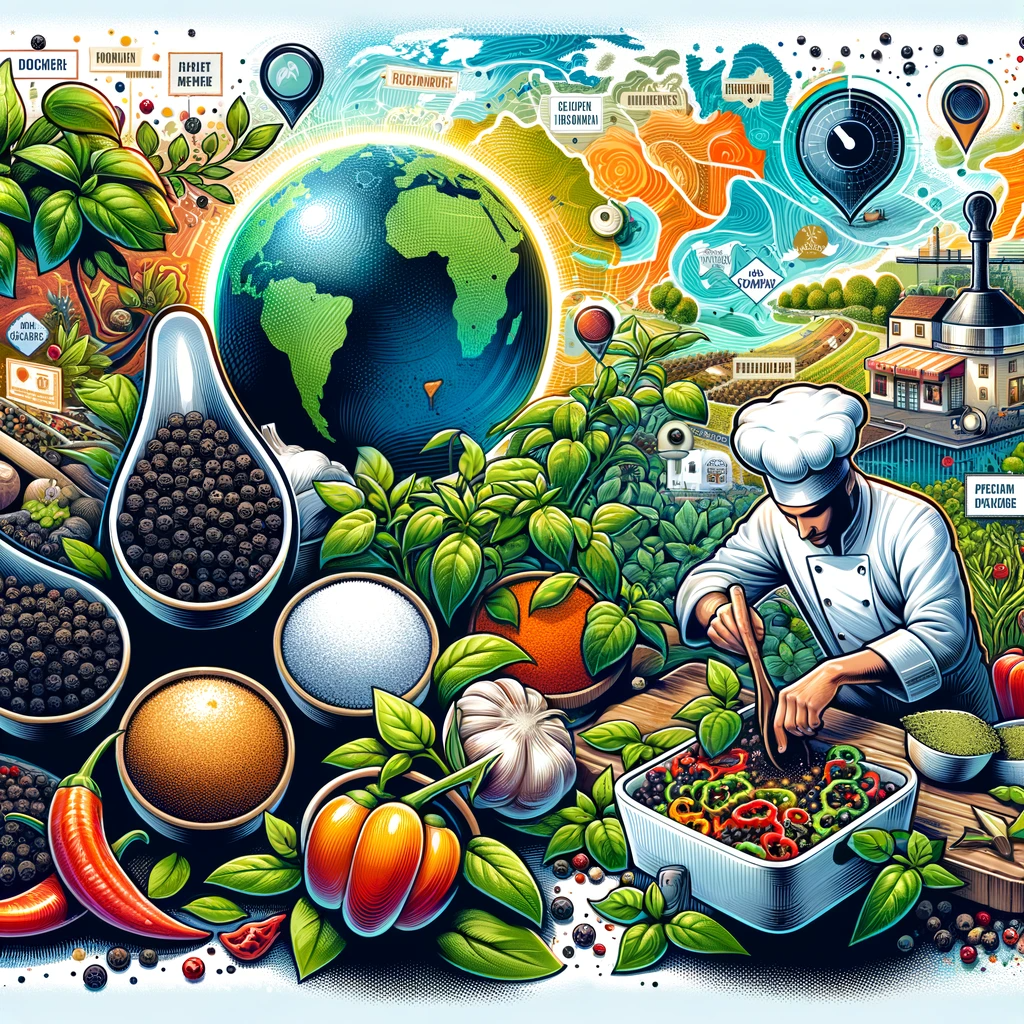When it comes to Italian cuisine, the use of pepper is not to be underestimated. Pepper, or “pepe” in Italian, plays a crucial role in enhancing the flavors of various Italian dishes. In this article, we will explore the significance of pepper in Italian cooking, its different forms, and how to pair it with pasta to create mouthwatering dishes that will transport you to the heart of Italy.
The Role of Pepper in Italian Cuisine
Pepper is one of the oldest and most widely used spices in the world. In Italian cuisine, it is valued not only for its flavor but also for its ability to elevate and balance the taste of various dishes. Here are some key roles of pepper in Italian cooking:
1. Flavor Enhancer
Pepper adds a bold, spicy, and slightly pungent flavor to dishes. It can be used in various forms, including freshly ground black pepper, white pepper, and even red pepper flakes, each contributing a unique taste to Italian dishes.
2. Seasoning Agent
Pepper is an essential seasoning agent in Italian cuisine. It is often used alongside other herbs and spices to season meat, poultry, seafood, and vegetables. Its versatility makes it an indispensable ingredient in Italian kitchens.
3. Pasta Companion
Pepper is frequently used to enhance the flavor of pasta dishes. Whether in the sauce or as a finishing touch, it adds depth and complexity to pasta recipes, making them more satisfying and delicious.
Types of Pepper in Italian Cooking
In Italian cuisine, you’ll encounter different types of pepper, each with its own distinct characteristics. Here are some of the most commonly used types:
1. Black Pepper
Black pepper is perhaps the most widely recognized and used type of pepper. It is known for its robust and slightly spicy flavor. Freshly ground black pepper is a staple in Italian recipes and is often used in pasta sauces, marinades, and meat dishes.
2. White Pepper
White pepper, on the other hand, has a milder flavor compared to black pepper. It is commonly used in recipes where a more subtle pepper flavor is desired, such as white sauces, creamy pasta dishes, and risottos.
3. Red Pepper Flakes
Red pepper flakes, or “peperoncino,” bring a fiery kick to Italian dishes. They are frequently used to add heat and spice to pasta sauces, pizza, and grilled meats. Just a pinch can make a significant difference in the overall flavor profile of a dish.
Pairing Pepper with Pasta
Now that we’ve explored the role and types of pepper in Italian cuisine, let’s delve into some mouthwatering pasta pairings that feature this beloved spice:
1. Spaghetti Aglio e Olio
Ingredients:
- 8 oz spaghetti
- 4 cloves garlic, thinly sliced
- 1/4 cup olive oil
- 1/2 teaspoon red pepper flakes
- Salt and freshly ground black pepper to taste
- Fresh parsley, chopped (for garnish)
- Grated Pecorino Romano cheese (optional)
Instructions:
- Cook spaghetti according to package instructions until al dente. Drain and set aside.
- In a pan, heat olive oil over medium heat. Add sliced garlic and red pepper flakes. Sauté until the garlic turns golden brown, being careful not to burn it.
- Add the cooked spaghetti to the pan and toss to coat with the garlic-infused oil. Season with salt and freshly ground black pepper.
- Serve hot, garnished with fresh parsley and grated Pecorino Romano cheese if desired.
2. Penne alla Vodka
Ingredients:
- 8 oz penne pasta
- 1/4 cup unsalted butter
- 1/2 cup diced onions
- 1/2 cup vodka
- 1 cup tomato sauce
- 1/2 cup heavy cream
- 1 teaspoon red pepper flakes
- Salt and freshly ground black pepper to taste
- Grated Parmesan cheese (for garnish)
Instructions:
- Cook penne pasta according to package instructions until al dente. Drain and set aside.
- In a large skillet, melt butter over medium heat. Add diced onions and sauté until translucent.
- Pour in the vodka and let it simmer for a few minutes until reduced by half.
- Stir in the tomato sauce, heavy cream, and red pepper flakes. Simmer for about 10 minutes, stirring occasionally, until the sauce thickens.
- Season the sauce with salt and freshly ground black pepper to taste. Add the cooked penne pasta and toss to coat.
- Serve hot, garnished with grated Parmesan cheese and a sprinkle of black pepper.
Final Thoughts
Pepper is an essential ingredient in Italian cuisine that adds depth, flavor, and complexity to a wide range of dishes, particularly pasta recipes. Whether you prefer the boldness of black pepper, the subtlety of white pepper, or the fiery kick of red pepper flakes, there’s a place for pepper in your Italian kitchen. So, go ahead and experiment with these delicious pasta pairings to experience the magic of pepper in Italian cooking.
